#superworms
Note
what are the superworms you keep mentioning? :0
They are superworms like a big mealworm and in the same family, basically the grub form of a darkling beetle. I want to establish a colony for my chickens so they can have live wormies as a treat.
Here is my worms that are super i fed them a some carrots the other day
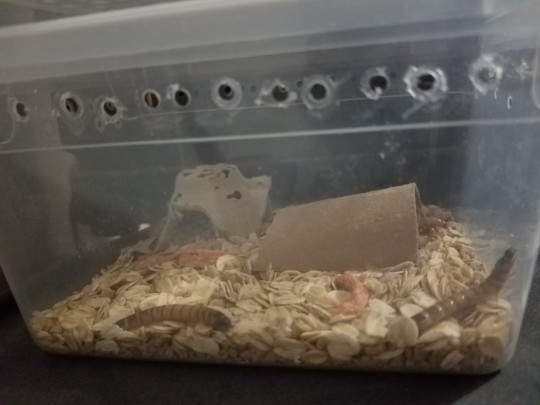
Here is two pupae the one on the left will be a beetle any day now and the one of the right needs more time. You can tell with how the legs darken
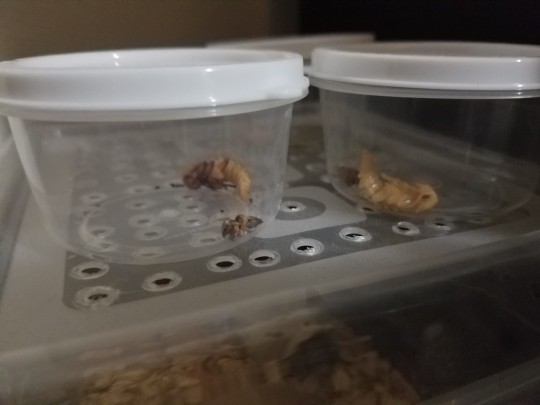
And this is a beetle, they are still hardening up, when thats done with will be a nice black color
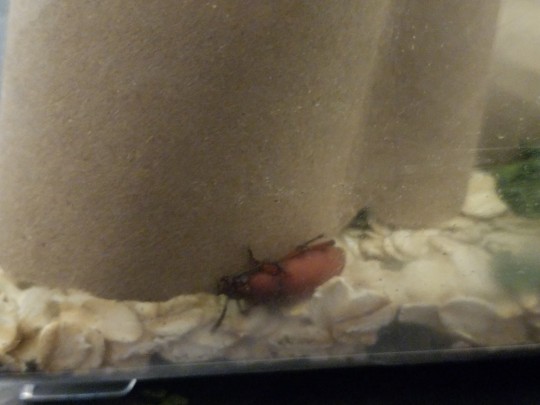
Here is what they look like when they are fresh out of the pupae ( this is the same beetle as above)
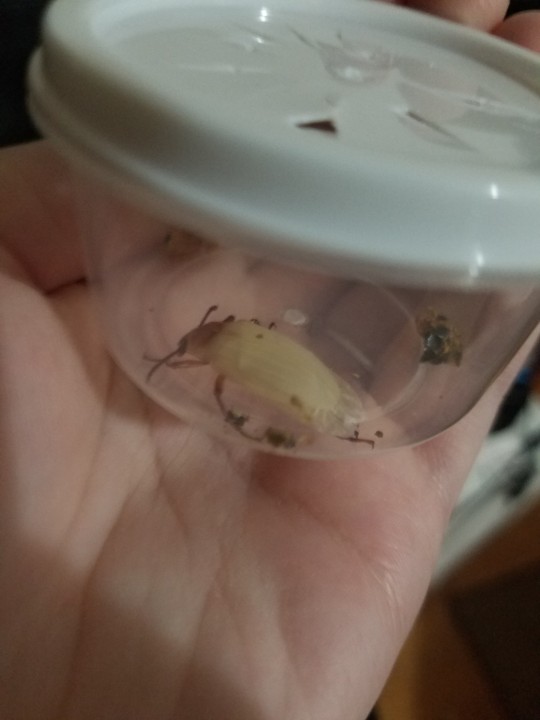
242 notes
·
View notes
Text
MAN i havent even really posted about Operation: You Wouldn't Download A Superworm
images of irl worms, pupae (i.e. weird transparent bug parts), and beetles below the cut!!!
so if you keep herps you probably know of superworms:
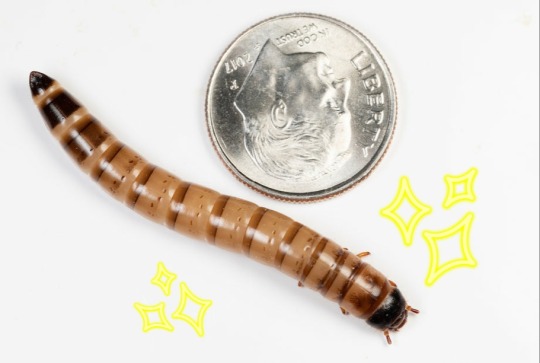
theyre a common feeder insect, a larger cousin to mealworms. operative word insect, because they aren't worms as in annelids--they're actually larvae of the zophobas morio beetle! they usually don't pupate left in the same container together because the other larvae will just eat a largely motionless pupa, but if you separate them out, they metamorphose!
that's my goal: putting them into little individual worm jail cells (using a jewellery box) and raising them into adult beetles, so i can breed my own worms instead of always buying them from pet supply shops. hence Operation: You Wouldn't Download A Superworm. i'm taking some worms i purchased fair and square and starting an illicit beetle breeding ring.
this was... a more difficult task than i expected. i did a LOT of tinkering with the heat and humidity levels, killed off a TON of worms and even some pupae! here's what those look like btw:

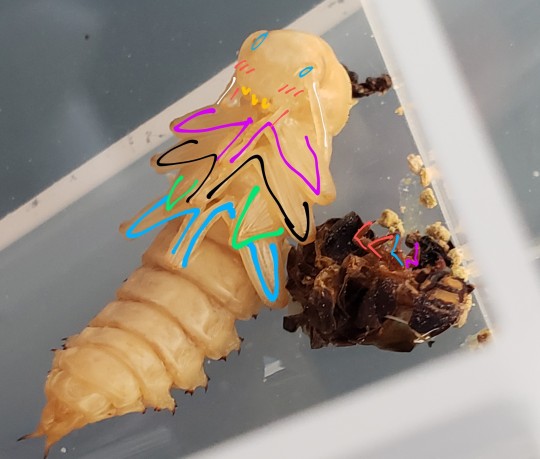
i redlined it so that you can see the structures of the folded-up legs, the wings/elytra (in green), the antennae, and the eyes (plus the mouthparts and anime blush).
my first few beetles came out malformed. the original beetle looked like this:
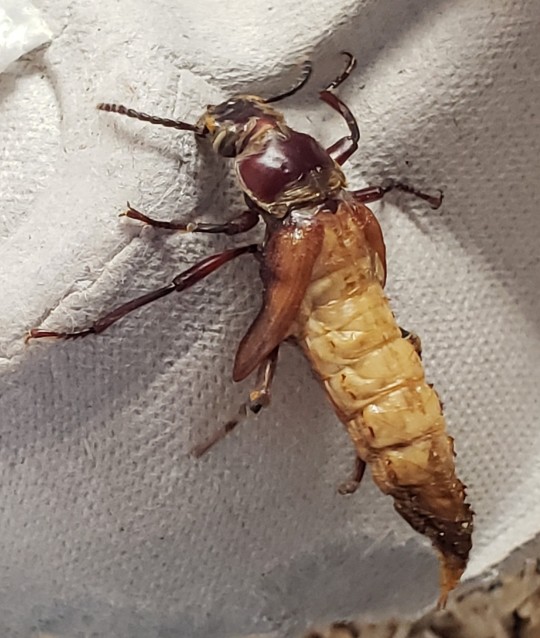
and beetle: the sequel immediately after looked the same. i got the heat right in time for beetle: the threequel, but the humidity was insufficient so her wings didn't form properly:
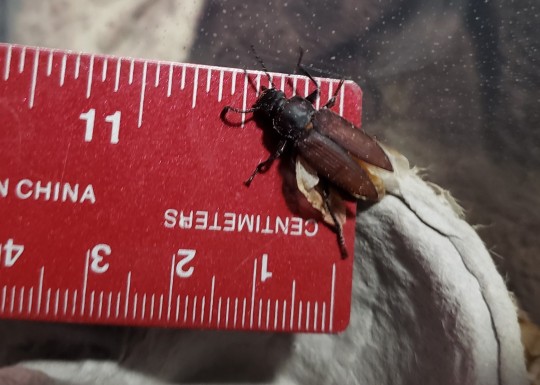
all three perished shortly after reaching adulthood. we honor their sacrifice in the name of clueless, fumbling science.
fortunately the era of success was immediately to follow, and i now have five (5!!!) healthy, thriving beetles!
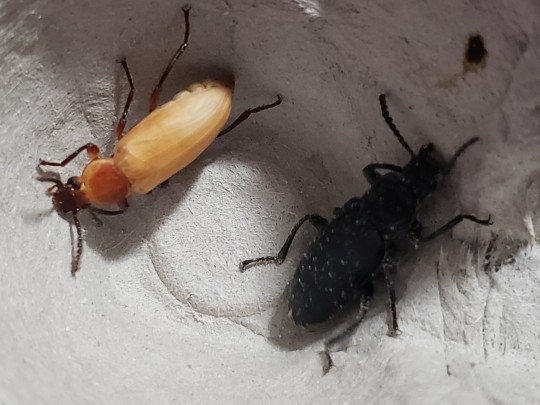
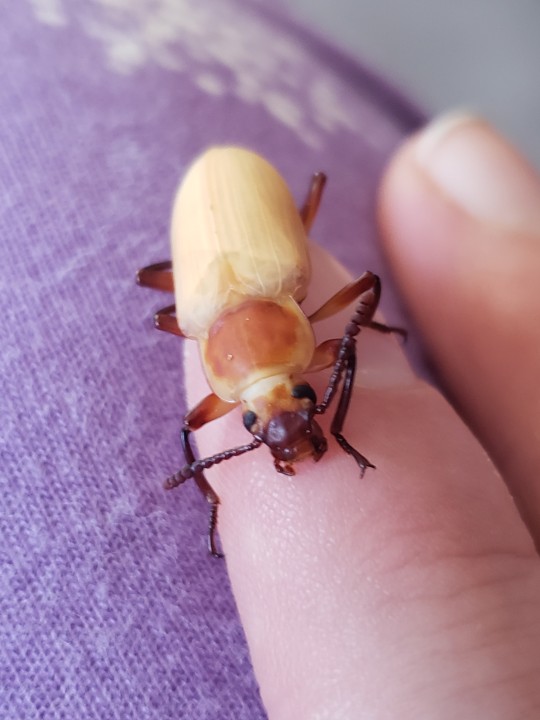
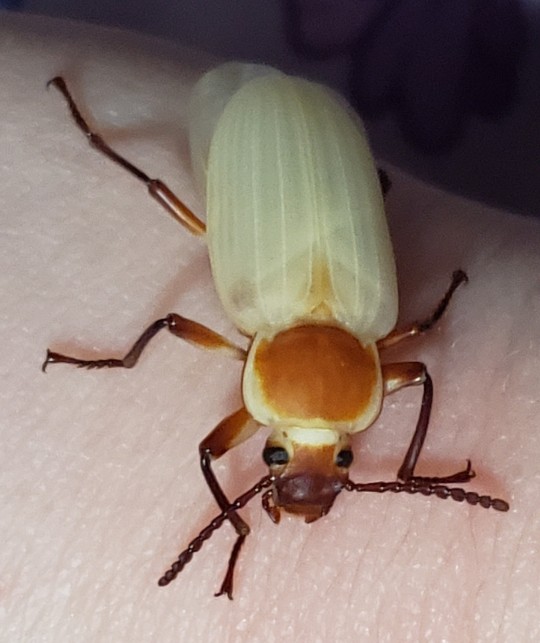
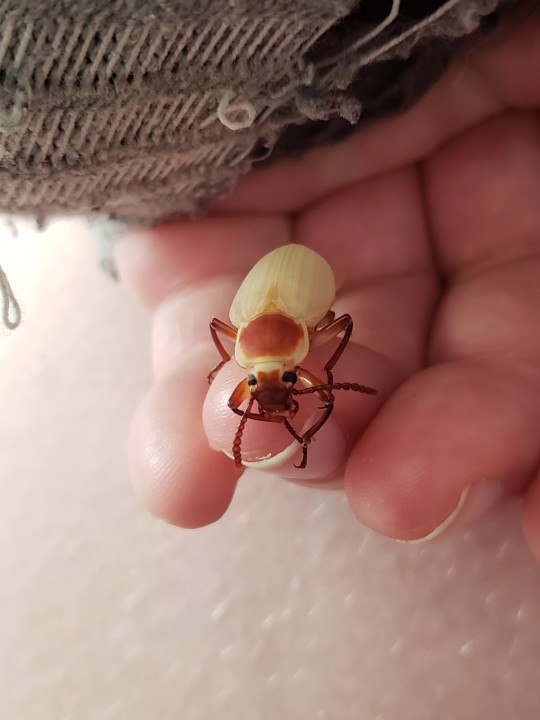
i'm being a little cheeky showing all 5 because god knows i can't tell them apart once they darken. the pale coloration is from when they're freshly done cooking, and then they turn black over the course of a few days. their names are beetle: the squeakquel, beetle: electric boogaloo, beetle: senior year, jenah 2, and marshmallow (soon to be burnt to black).
the useful thing about these pics though is that you sex them by looking at their mouthparts. i have 4 females and 1 male, the only male being the eldest (beetle: the squeakquel). you can see the concave space above his mouthparts here:
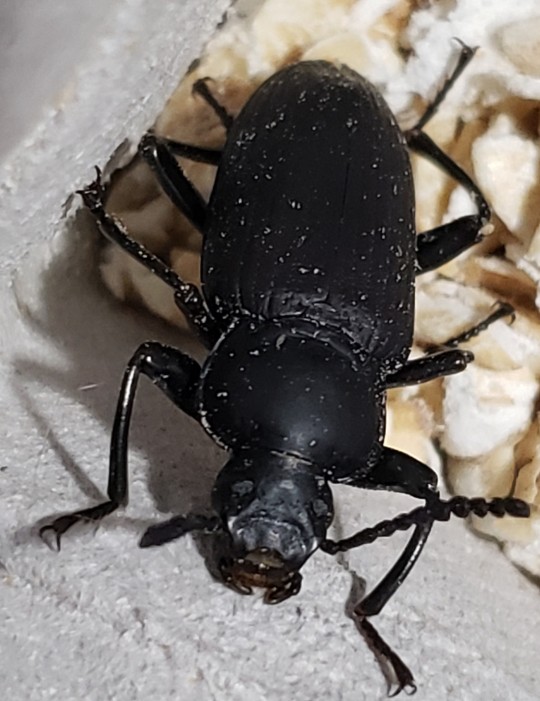
contrast to the female bugs pictured, who don't have that little space.
11 notes
·
View notes
Text
Woims <3
#bugs#worm#worms#superworm#superworms#larva#larvae#original content#am I learning photography just to take pictures of my new pets?#yes. yes I am.#whoever said money can’t buy happiness forgot about $3 for twelve superworms
12 notes
·
View notes
Text
heres a video of my bearded dragon eating!! i know i dont post stuff like this but i feel he needs recognition because hes adorable
13 notes
·
View notes
Text
Reptivite day = worm day!
#flan the gecko#flan#sorbet the gecko#sorbet#donutthegecko#donut#leopard gecko#lizard#reptile#gecko#reptiblr#video#worm#worms#insect#insects#superworm#superworms
29 notes
·
View notes
Text
https://phys.org/news/2022-06-superworms-capable-munching-plastic.html
One way to put the findings to use would be to provide superworms with food waste or agricultural bioproducts to consume alongside polystyrene.
"This could be a way to improve the health of the worms and to deal with the large amount of food waste in Western countries," said Rinke.
But while breeding more worms for this purpose is possible, he envisages another route: creating recycling plants that mimic what the larvae do, which is to first shred the plastic in their mouths then digest it through bacterial enzymes.
"Ultimately, we want to take the superworms out of the equation," he said, and he now plans more research aimed at finding the most efficient enzymes, then enhancing them further through enzyme engineering.
The breakdown products from that reaction could then be fed to other microbes to create high-value compounds, such as bioplastics, in what he hopes would become an economically viable "upcycling" approach.
85 notes
·
View notes
Text
Super worms per pulire l'ambiente dalla plastica
Vermi mangia plastica: realtà o finzione? La scoperta sconcertante. I rifiuti di plastica sono ovunque, la scienza sta cercando alternative ecologiche per smaltire ciò che non può essere recuperato in altro modo
L’enorme quantità di rifiuti esistenti non accenna a diminuire anzi, al contrario, cresce in maniera esponenziale. La plastica prodotta annualmente è enorme e, per quanto, cerchiamo di farvi fronte con il riciclo, ma non basta. Il quadro della situazione peggiora ulteriormente, se consideriamo tutto ciò che si disperde nell’ambiente e che non è biodegradabile.
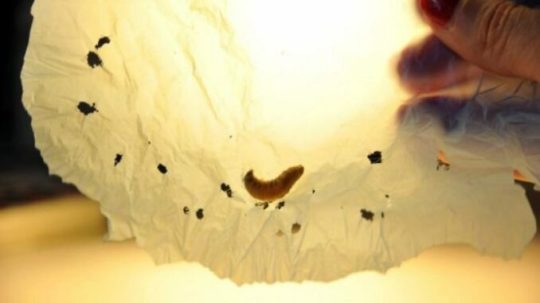
Verme mangiaplastica (Fonte foto: cleanmalaysia.com)
Le materie plastiche permangono per almeno 1000 anni, provocando danni immensi alla natura, agli animali, e quindi alla salute umana. Finalmente si stanno attuando progetti di rinnovamento aziendali, che vanno a modificare la situazione a monte, perché non è possibile proseguire con questo ritmo di distruzione del pianeta. Ma tutta la plastica esistente, ed attualmente in produzione, come possiamo eliminarla?
Diversi studi sono stati portati avanti in questo ambito. uno, si è svolto presso il Dipartimento di Ingegneria civile ed ambientale dell’Università di Stanford. La scoperta riguarda l’esistenza di una tipologia di vermi che si nutrono di plastica. Si sono fatti esperimenti su 100 esemplari cibati con circa 37 grammi di polistirolo al giorno.
Questi lo hanno trasformato, in parte, in anidride carbonica ed in parte, in frammenti biodegradabili. Non solo si presentano sani come quelli che si nutrivano di sostanze comuni ma, allo stesso tempo, i loro escrementi risultano essere sicuri, tanto da poterli utilizzare come fertilizzante organico nei terreni per le colture.
Le recenti scoperte sul verme mangia plastica
Questo grazie all’azione di microrganismi presenti nel loro intestino, in grado di smaltire il polietilene, ossia la plastica utilizzata per i sacchetti dei rifiuti. I ricercatori intendono capire se tali microrganismi possono decomporre anche altri tipi di plastiche come il polipropilene, presente in prodotti che vanno dal tessile ai componenti automobilistici.
Un altro studio di questo genere, è descritto dalla rivista Microbial Genomics, condotto dagli scienziati della School of Chemistry and Molecular Biosciences presso l’Università del Queensland. Gli scienziati hanno definito questi vermi Super worms.

Vermi mangia plastica (Fonte foto: leonardo.it)
Anche in questo caso hanno nutrito degli esemplari seguendo regimi alimentari diversi per un periodo di tre settimane. Ad un gruppo è stata somministrata schiuma di poliestere e ad un altro crusca. I primi, non solo sono sopravvissuti, ma hanno anche mostrato un aumento del peso marginale, ricavandone energia.
Occorrono, comunque, altri studi sui processi di metabolizzazione, quali sono le condizioni favorevoli alla degradazione e quali sono i micro organismi in grado di assimilare i polimeri. I risultati potrebbero rappresentare un prezioso aiuto per ottenere enzimi più potenti che possano degradare maggiori quantità di plastica esistente.
Sviluppare dunque, nuove tecnologie alternative, per la gestione sicura di questo tipo di rifiuti. Vi è forte interesse, inoltre, anche per l’ambiente marino. Qui il materiale plastico rappresenta una particolare minaccia, non solo per le specie che vivono nell’oceano, ma anche per i volatili che se ne nutrono.
Read the full article
#biodegradabile#materieplastiche#microrganismi#oceani#plastica#polietilene#riciclo#rifiuti#Superworms#Vermimangiaplastica
2 notes
·
View notes
Text
IM GONNA GET SOME SUPER WORMS!!!!
YIPEE!!!!!!
3 notes
·
View notes
Text
Superworms and Mealworms can break down plastic and should be used in trash disposal
like seriously
4 notes
·
View notes
Text
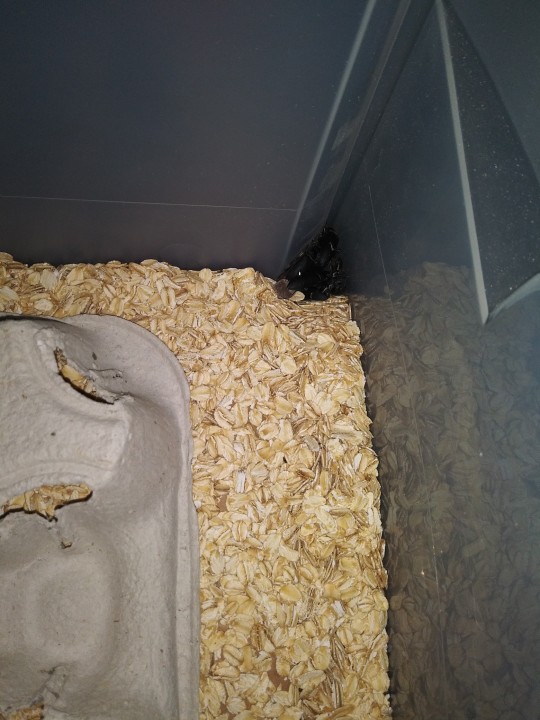
They all really enjoy this corner in particular
0 notes
Text
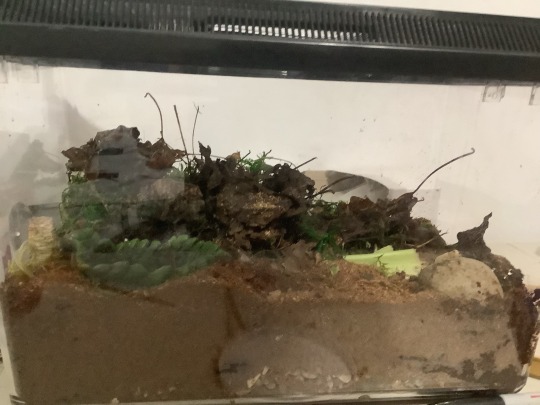
I need name suggests for this terrarium that I made it purpose is to provide me with insects for over the winter
1 note
·
View note
Text
Update on the superworms
They are worming it up in there
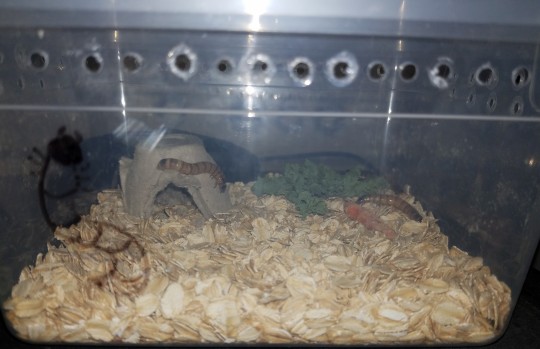
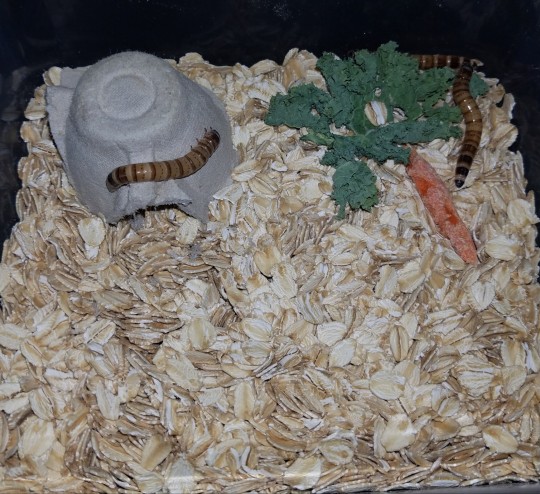
73 notes
·
View notes
Text
the newest beetle to pupate got stuck in her molt so i had to help pull it off because her back legs were trapped in it! she's fine now but needs a name and i want it to refer to her misadventure.
for reference her 7 roommates are beetle: the squeakquel (male), beetle: electric boogaloo, beetle: senior year, jenah 2, marshmallow, windshield wiper (aka WW or quadruple-U) and ty beetleridge (male).
pics of her (both stuck and freed) under the cut!
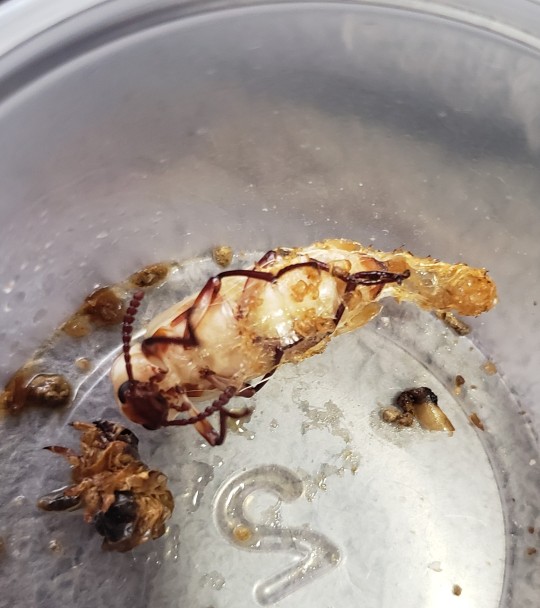

#v excited to have 2 males btw#that's the perfect number for a breeding population as far as im concerned#1 and then a backup#with 1 male and then 5 ladies in a row i was worried that i had somehow changed the conditions so they all developed a certain way#and it was like what if something happens to him and then i cant figure out how to get another male#so ty beetleridge was a huge relief#bugs#insects#beetles#poll#tumblr poll#zophobas morio#superworms#sage speaks#sage original post#sage pets
8 notes
·
View notes
Text
Scientists Have Discovered Superworms That Can Eat Polystyrene
Scientists Have Discovered Superworms That Can Eat Polystyrene
Polystyrene is one of the most problematic types of waste. It is mainly used as a packaging material and is produced in huge quantities every day. Unfortunately, it is not used repeatedly and when it ends up in nature, it takes more than 500 years to decompose. Fortunately, there is hope that could help with the recycling of this durable material. Scientists have discovered a superworm that can…
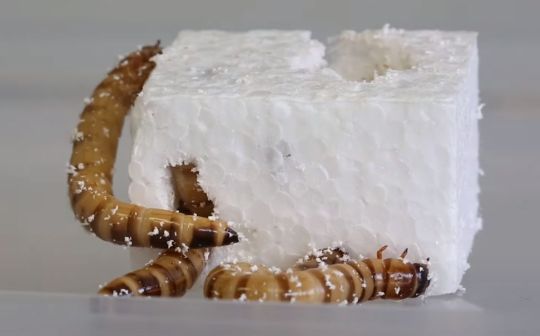
View On WordPress
0 notes
Text
Strike from the darkness! Disappear into the shadows...
#Cannoli#Cannoli the gecko#leopard gecko#lizard#reptile#gecko#reptiblr#video#Worm#Superworms#Insect#Bug
18 notes
·
View notes
Text
Worm Of The Week
Could hungry #superworms help solve the growing #plastic problem? Some intriguing research featured by @micgenomics
Microbial Genomics as a journal can be a tad indigestible but they have got their teeth into a good story with a report on research into the eating habits of the larvae of Zophobas morio, a species of beetle known as superworms. They have enzymes in their guts, the team from University of Queensland found, capable of digesting polystyrene.
The larvae were introduced to pieces of polystyrene…
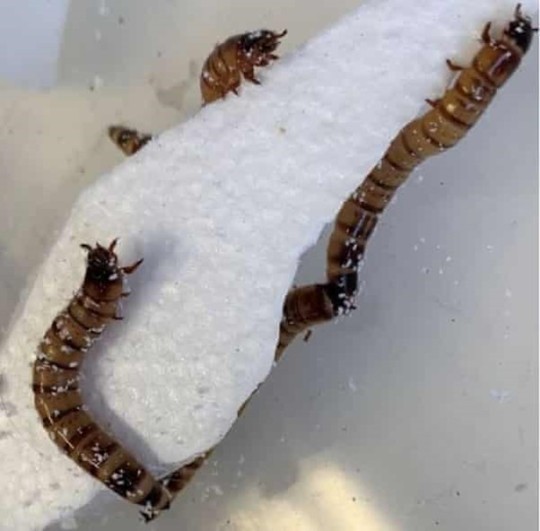
View On WordPress
1 note
·
View note